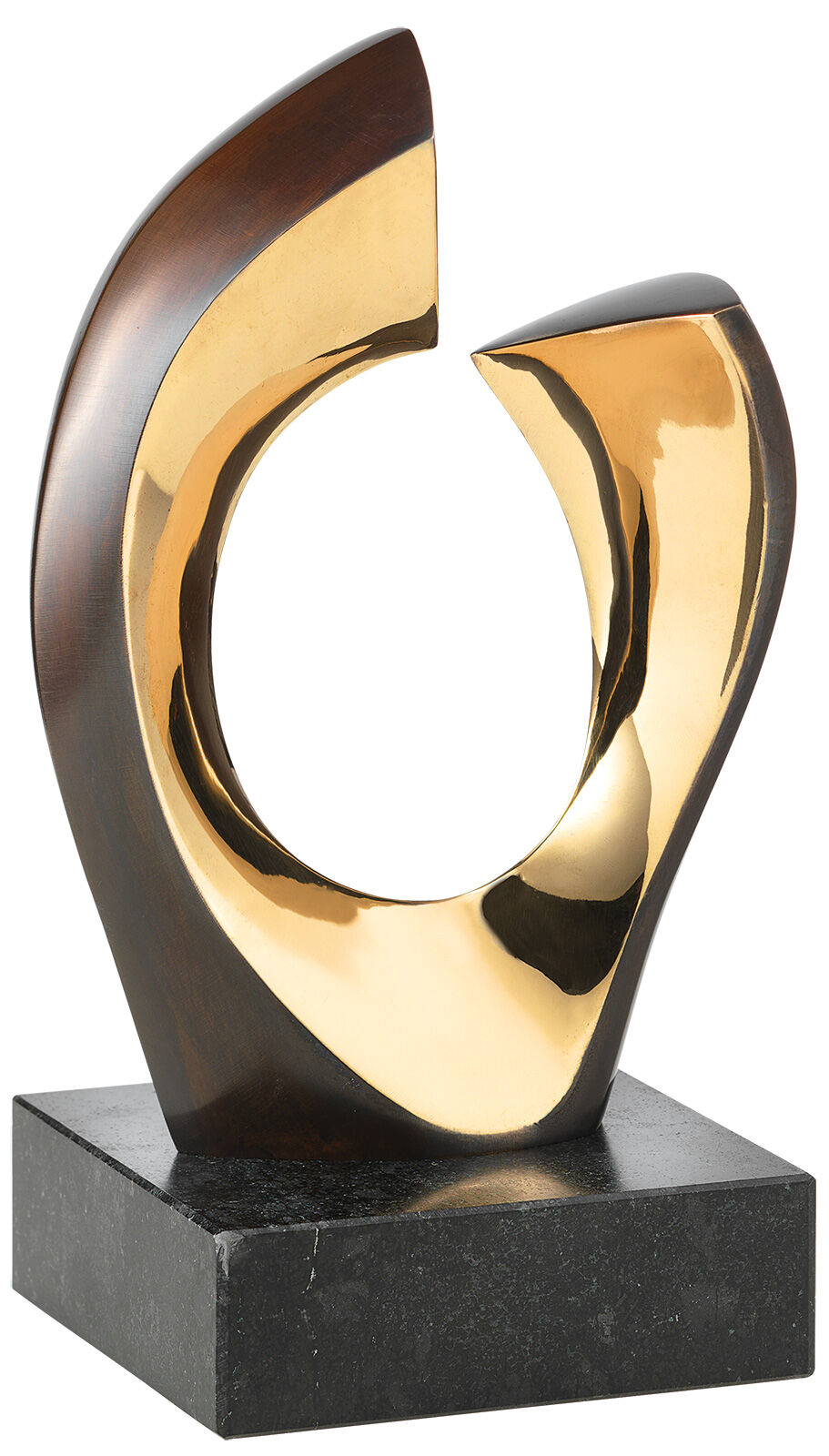Sculpture "The Kiss", bronze
Sculpture "The Kiss", bronze
Quick info
ars mundi Exclusive Edition | limited, 49 copies | numbered | signed | hallmarked | certificate | bronze + marble | patinated | polished | size 19 x 11 x 9 cm (h/w/d) | weight approx. 1.7 kg
Detailed description
Sculpture "The Kiss", bronze
Sculpture in fine bronze, patinated and polished. Cast by hand using the Lost-Wax-Process. Limited edition of 49 copies, numbered, signed and hallmarked with the foundry stamp, with numbered certificate of authenticity and limitation. On a pedestal of black marble. Size 19 x 11 x 9 cm (h/w/d). Weight approx. 1.7 kg. ars mundi Exclusive Edition.
About Pierre-Paul Maillé
The painter and sculptor Pierre-Paul Maillé was born in Canada in 1962. He has lived and worked in Germany since 1988. He studied fine arts and art history as well as sculpture in Montreal and has had numerous solo and group exhibitions as a freelance artist.
Maillé creates abstract sculptures with an elegant radiance made of different materials.
An alloy of copper with other metals (especially with tin) used since ancient times.
When casting bronze, the artist usually applies the lost-wax technique which is dating back more than 5000 years. It's the best, but also the most complex method of producing sculptures.
First, the artist forms a model of his sculpture. It is embedded in a liquid silicone rubber mass. Once the material has solidified, the model is cut out. The liquid wax is poured into the negative mould. After cooling down, the wax cast is removed from the mould, provided with sprues and dipped into ceramic mass. The ceramic mass is hardened in a kiln, whereby the wax flows out (lost mould).
Now we finally have the negative form, into which the 1400° C hot molten bronze is poured. After the bronze had cooled down, the ceramic shell is broken off and the sculpture is revealed.
Now the sprues are removed, the surfaces are polished, patinated and numbered by the artist himself or, to his specifications, by a specialist. Thus, each casting becomes an original work.
For lower-quality bronze castings, the sand casting method is often used which, however, does not achieve the results of a more complex lost-wax technique in terms of surface characteristics and quality.
Graphic or sculpture edition that was initiated by ars mundi and is available only at ars mundi or at distribution partners licensed by ars mundi.
Term for an art object (sculpture, installation), which is produced in multiple copies in a limited and numbered edition according to the artist‘s will.
Artist's multiples have been called the most accessible and affordable art on the market.
A plastic work of sculptural art made of wood, stone, ivory, bronze or other metals.
While sculptures from wood, ivory or stone are made directly from the block of material, in bronze casting a working model is prepared at first. Usually, it is made of clay or other easily mouldable materials.
The prime time of sculpture after the Greek and Roman antiquity was the Renaissance. Impressionism gave a new impulse to the sculptural arts. Contemporary artists such as Jorg Immendorf, Andora, and Markus Lupertz also enriched sculptures with outstanding works.


